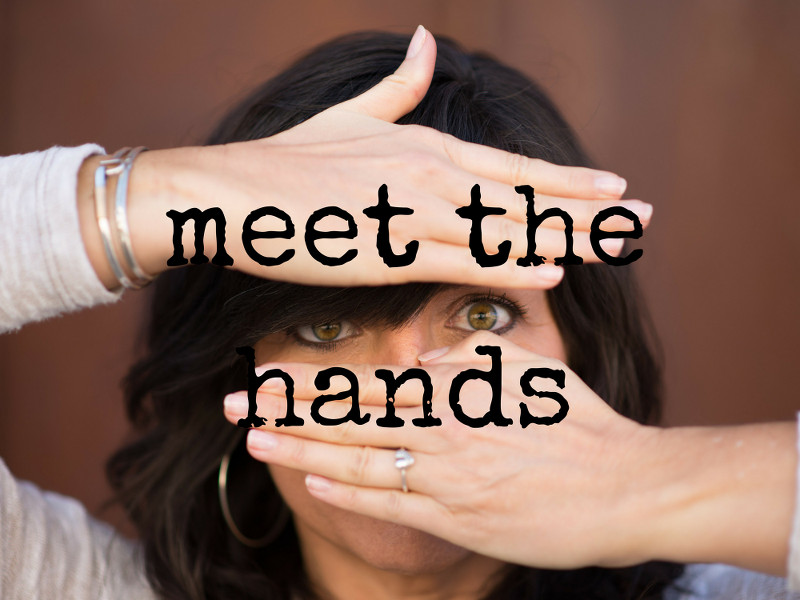Class #10 Cooking Prep School
Can you believe that you are already to lesson 10? I know you must be on your way to
cooking up a storm by now. This lesson is designed with some basic cooking principals
in mind. They are aimed to help eliminate frustrations and are integrated with all the new
techniques you have just learned from lessons 1-9. In the video we are going to talk
about setting up to cook. Then you can read about finding and reading a recipe that is
right for you. Finally, we will put it all together in the next steps. You are almost there!
1. The Recipe Set-Up
How many recipes have you read that say “pre-heat” oven? Good recipes are written
with workflow in mind. This is why a recipe will tell you to pre-heat an oven before you
start anything else. It’s all about workflow. Now don’t be jealous, but this comes
naturally to me. This is one of the reasons why I feel confident about teaching workflow
techniques and thought processes. You will find once you master these few tricks your
work flow will improve and frustration and kitchen fails will fade away.
This class is designed to help you work with the kitchen you have. Workflow is very
important. Try these tips to make things FLOW well for you!
- Before you get started, check your ingredient list. Hopefully you have tackled this task
with the meal planning class you have already taken. To eliminate kitchen frustrations,
make sure you have everything you need for your recipe. - Read the recipe fully before you get started. You may find that you need to soften
butter, pre-heat an oven or let the eggs get to room temperature. I think is best to
review a recipe when you are making the shopping list. This will tell you ahead of time
if any special tasks need to be completed. - Timing is everything. If you know you only have 30 minutes to cook and the recipe
says it takes 1 hour, you might need to think twice about trying to squeeze it all in. I
actually plan ahead if I know I am going to be trying a new recipe, making sure I have
allowed myself plenty of time to get it just right. Sometimes the time it states in the
recipe is an under estimate of the time it might actually take you. - Once I read over the recipe, ensure I have all the ingredients and know I have enough
time to cook; I take time to set up workspaces. I go beyond the instructions of the
recipe and I prep my space. I will talk about this more in section 2 of this class.
2. The Workspace Set Up
This is an important lesson for many reasons, the main reason being I bet it is a process
you skip. The reason workspace set-up gets skipped is because you have the illusion
that it takes up too much time. In reality it saves you time and really helps minimize
kitchen fails. So please consider following along. See if you like this process. If it
improves your time management in your kitchen it is probably worth implementing every
time you cook.
- We have all watched the TV cooking shows and see how they have all the ingredientsmeasured and put into cute little bowls. You may think they have done this for show.
In reality they have done this hoping you will take up the habit. This cooking set up is
called Mise en Place. In French it means “everything in its place”. Measuring out your
ingredients before you start to cook is a great way to make sure that you stay on track
and eliminate mistakes. Here is a quick bonus video to explain the process with
examples. - After I get all my ingredients measured, I like to gather all the tools I will need on the
counter and in the workspaces where I will be using them. I get out all the knives,
cutting boards, bowls, cookware and whatever else I think I will need. I put the
cookware near the cooking surfaces and the cutting board in my prep workspace. - Once these task are complete I can consult my recipe for pre-instructions like pre-
heating my oven or frying pan. Boiling or chilling water. This makes the work flow well
and easy. Even if you are a seasoned cook, you can benefit from these few great
habits.
Now you are ready to cook! It may take a few times to get used to these ideas. I always
put them to practice when I am recipe developing or cooking a brand new recipe. It
really helps me stay on track and saves me a ton of time by avoiding mistakes.
3. How to Read a Recipe
I love reading recipes. I find them inspiring and they help me understand how
ingredients go together. I had an aunt who had an extensive cookbook collection and as
a kid I could not understand the fascination. Now I get it! You have to eat so why not be
thoughtful about it. Reading recipes will help you achieve this ideal state of mind. I want
to share a few tips I have about selecting and reading recipes.
- Selecting a cookbook is like getting a how to manual for a certain type of cooking. If
you are a Paleo eater you might find the best recipes for your lifestyle in Paleo
cookbooks. However, I love to read all kinds of cookbooks. I am not a vegan but I
read vegan cookbooks routinely. I love vintage cookbooks and love to tweak not so
healthy into healthy and delicious. So my advice is to go out and get some cookbooks
that you enjoy. I love to find them in thrift stores and second hand bookstores. When I
can find one that has notes or flags in the margins I am in absolute heaven. - Read your recipe thoroughly before you even buy ingredients. Then read it again
before you start to cook. Be purposeful when reading it. I often envision the steps as I
am reading. This helps me when cooking new or complicated recipes. Especially if I
am baking. - You want your healthy recipes to come out looking like the photos? Don’t mess with
the core ingredients. If the recipe calls for almond flour and you substitute it with rice
flour, you are going to get an alternative outcome. However if a recipe calls for kosher
salt and you choose sea salt you will have a photo finish! - On a similar note, if a core ingredient is in the title of the recipe I say leave that
ingredient in. The author was using that ingredient as a flagship flavor. You might be
disappointed in the flavor profile if you change it and have a kitchen fail. - Although someone else wrote the recipe, you are the “soul” of the outcome. You and Icould make the same recipe on the same day with identical ingredients and we may
achieve different results. That is because you put your soul in the effort of cooking a
meal and the outcome will be uniquely yours.
4. Next Steps
My final thoughts on falling in love with your kitchen:
Don’t try to master everything. Master the seven meals that will be in your staple
routine. Have one that is perfection that you could cook with your eyes closed. Then
feel your way into new territory and new techniques. The more you cook the more you
will realize what your strengths are and what your weaknesses are. Work on your
weaknesses but don’t obsess about them. I am not a great baker. I work on those skills,
but I never make them part of my mastered routine.
Now that your mindset is detoxed, it’s time to start cooking. Look for more classes in the
go2kitchens.academy. Perfect your healthy cooking skills along the way. Always
remember that a health journey is a process and not an event. It takes an investment of
your time. I look forward to hanging out with you and helping you along the way.
Transformation is a beautiful thing!
Well this is it! Last worksheet! It is time to make a list of all the kitchen skills you are
great at and find more ways to incorporate them into your new detoxed kitchen. The
work is not over. I also think it is valuable to make a list of things that you think still need
work and of new skills that you still want to learn. This will help you even fall deeper in
love with your kitchen.


